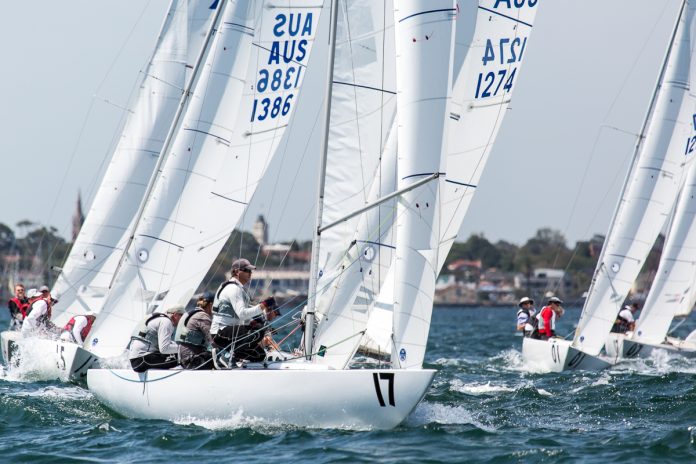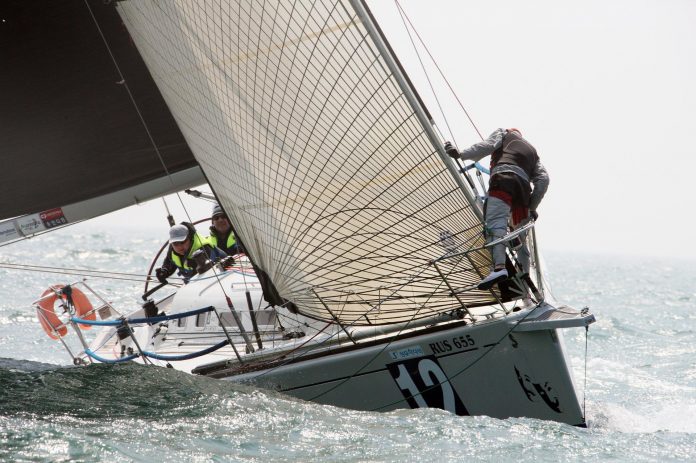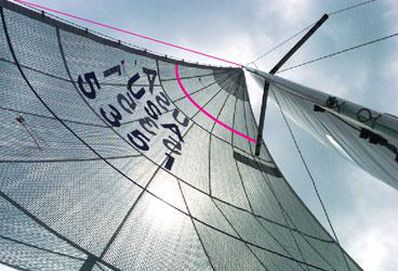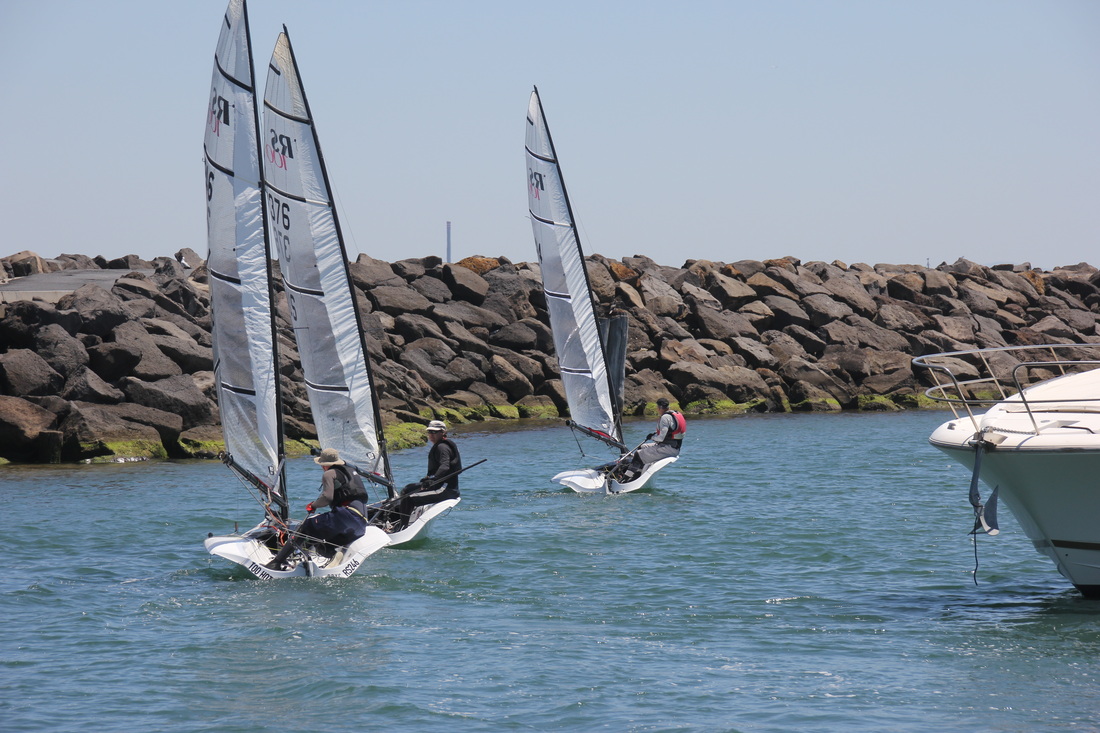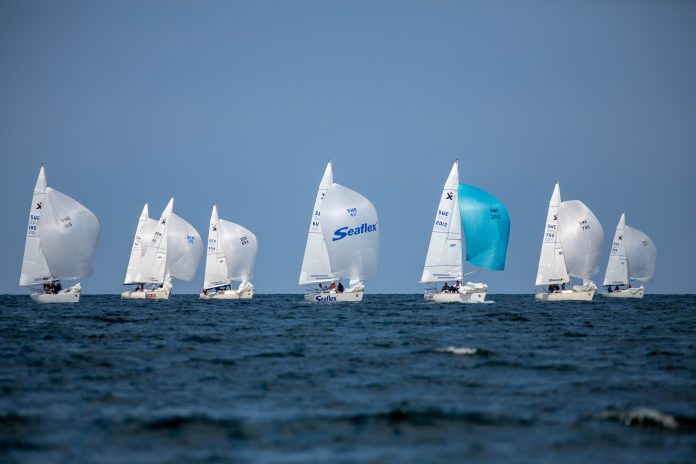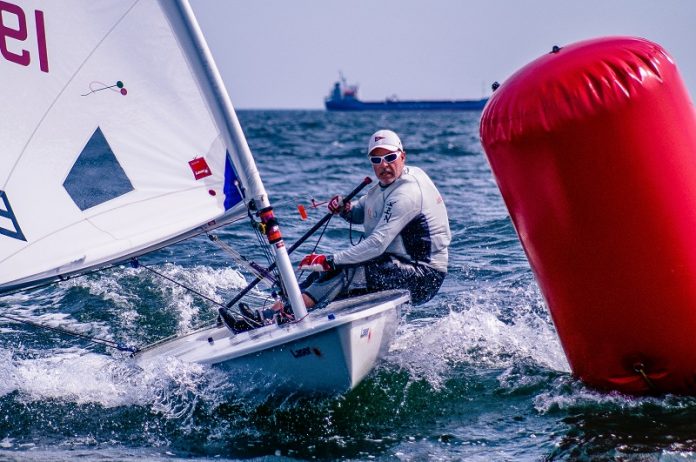
With many of us in the Southern Hemisphere getting ready to head off to National championships and the Sydney to Hobart big boats already finished I thought it was a great time to re-post good mate David Dellenbaugh’s article, Ingredients of Success.
As I have mentioned before, Dave’s website https://www.speedandsmarts.com is the best resource that I have found on the internet for sailors of all levels that want to improve their sailing results.
Dave writes: In order to be successful at racing, a sailor must have a wide range of skills. Consider the America’s Cup, for example. In a serious campaign, the actual sailing is only a small part of the program, perhaps as little as 10-20%. The rest is spent raising money, designing and building the boat, getting in shape, repairing the boat, and so on.
A lot of people have pointed out that Dennis Conner is not the world’s best helmsman; however, he is right up there when it comes to planning and executing America’s Cup campaigns.
SAILING TO WIN BOOK AND BONUSES
There are basically five areas where the typical sailor must concentrate in order to improve her or his racing performance: Preparation, Boat handling, Boatspeed, Strategy, and Tactics.
Preparation —
Preparation includes everything you must do before your race committee blows the first gun. Among the most important elements of preparation is making sure your boat will hold together. I can’t count the number of times I’ve seen a race lost because of a breakdown.
All your blocks, lines, cotter pins, etc. should be checked to ensure that they are in good working order. Regular maintenance, cleaning, and replacement of worn parts are essential.
Careful preparation of your underwater surfaces is also very important. The hull, centerboard, and rudder should be clean, smooth, and fair. Fill in nicks and gouges so you minimize disturbances in the water flow.
Organization —
Organization is an all-encompassing term that is integral in sailboat racing. How will we get the boat there? Do we have all the pieces? Spare parts? Tools? When do we have to be ready to sail? Where will we stay? Who’s in charge of the food? Do we have our lifejackets? sails? paddle?
In my sailing, I use several checklists to make sure I don’t forget anything. This lets me concentrate more on the actual racing.
FREE CHAMPIONSHIP SAILING GLOVES
Boat handling —
Boat handling refers to how the skipper and crew handle their boat in maneuvers like tacks, jibes, mark roundings, spinnaker work, etc. Large gains (and losses) can be made during these maneuvers and again, practice is the key.
The various boat handling maneuvers should become second nature so that you can concentrate on the race around you. Imagine rounding the windward mark in first place with the rest of the fleet right on your heels. POP! Your crew expertly sets the spinnaker, it fills and off you go on a plane, leaving the fleet in your wake to battle for second.
Without the ability to execute this perfect set, you would have a lot of company for the remainder of the race.
Crew training should be a big part of pre-race preparation since it is usually too hectic in the middle of a race to discuss calmly the best way to take down the spinnaker. Set up times when you won’t be racing where you can concentrate on practicing new maneuvers and smoothing out any boat-handling areas that have given you trouble in recent races.
Boatspeed —
As you get more racing experience, you may notice that the top sailors not only get good starts and have good boat handling, etc. they are also just plain fast. This boat speed comes from a combination of variables such as rig tuning, sail trim, steering technique, boat preparation, etc.
Rig tuning refers to the position of your mast and the tension of the shrouds and backstay. These factors control mast bend and, in turn, affect the shape and efficiency of the sails. Subtle changes in sail trim controls such as sheets, leads, outhaul, cunningham, and vang will also optimize your sails for the conditions.
The ability to steer a boat well, especially in wavy or choppy conditions, is one of the secrets to good speed and also takes much practice. Knowing when and how much to head up or off to avoid a wave, or how to trim the sails when you can’t avoid a wave is a fine art.
Other factors affecting boat speed include the fairness of the hull and foils (no weeds or barnacles here!), minimizing windage (especially in the rigging), and sailing in clear, undisturbed air (away from other boats).
Don’t worry if this seems overly complicated at first. You can always get general guidelines for tuning your rig and trimming your sails from class members, sailmakers, or magazine articles. As you become more familiar with your boat and are more competitive in your racing, you can begin to experiment with boat speed variables on your own.
Strategy —
Strategy is your plan for how to get around the race course as fast as possible. When formulating a strategy, you have to consider wind, current, and sea conditions. For example, you want to figure out if there is a pattern in the wind. Is it shifting back and forth (oscillating) or is it gradually shifting in one direction (persistent)? Where is the most wind? What is the weather (and wind) forecast?
Current can also play an important role in your strategy. Sailing in the S.O.R.C. (Southern Ocean Racing Conference) off the east coast of Florida, it can often be advantageous to sail a much longer course to get out to the Gulf Stream which may be pushing you northward at up to four knots! Knowing the direction and strength of the current on all parts of the course is valuable information.
Sea conditions are often an overlooked aspect of strategy. Does one side of the course have smoother water? Does rougher water indicate a more favorable current, a longer fetch for the seas to build up, or shallower water? Part of your preparation before a race is to accumulate this information so you will have a game plan to follow once the race has begun.
Tactics —
Tactics are the tools you have for executing your strategy in a fleet of boats. The object is not to let other boats get in the way of your plan. Some of the questions you must deal with continually are: How do you position yourself relative to the other boats?
Can you control where your closest competitors go or prevent them from getting toward the favored side? How can you minimize your risks? What rules take effect when boats come together?
There are books and articles galore on tactics, but the best experience is lots of racing and observation. You will gradually build up your own repertoire of tactical moves for each situation that arises.

